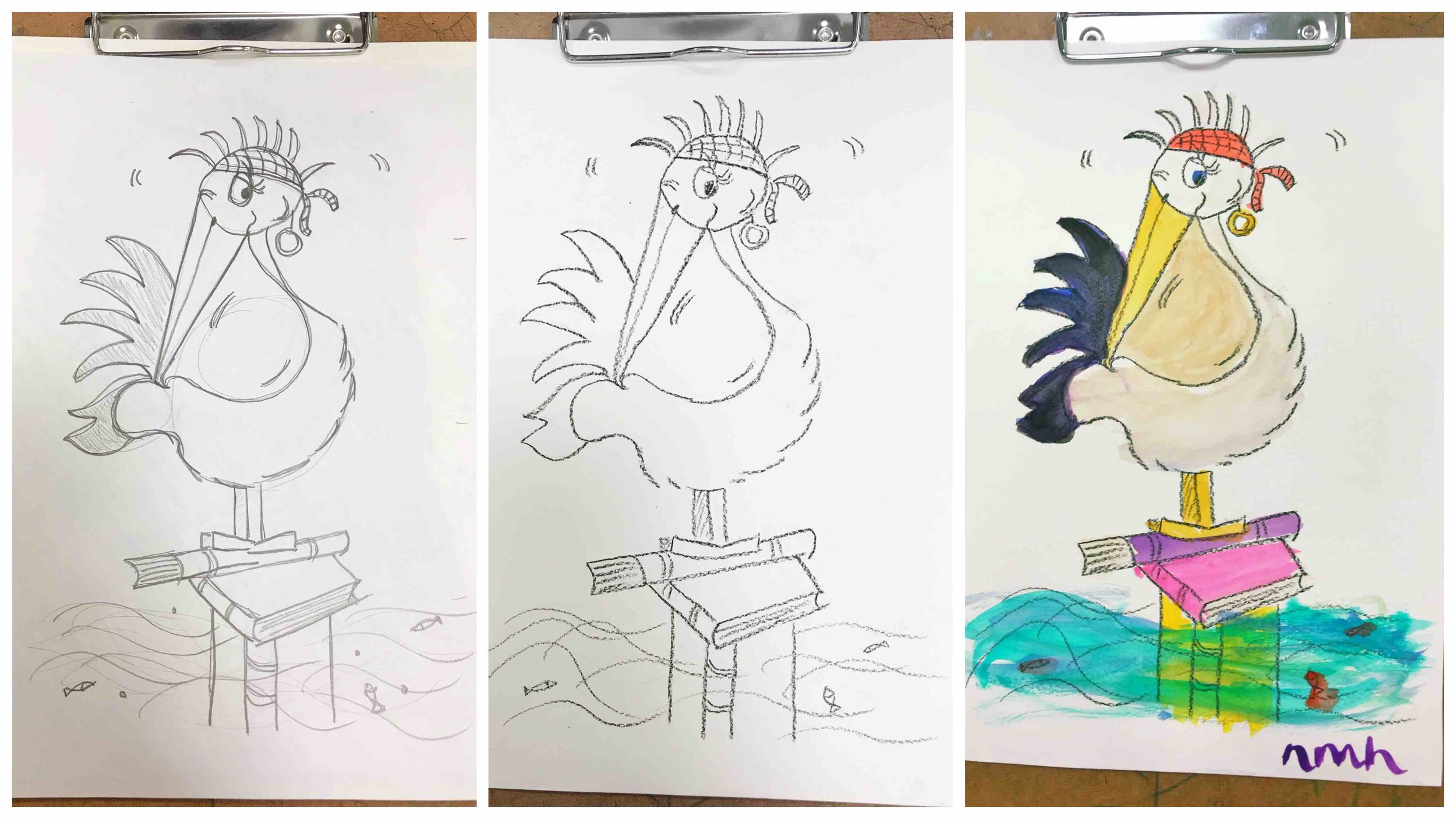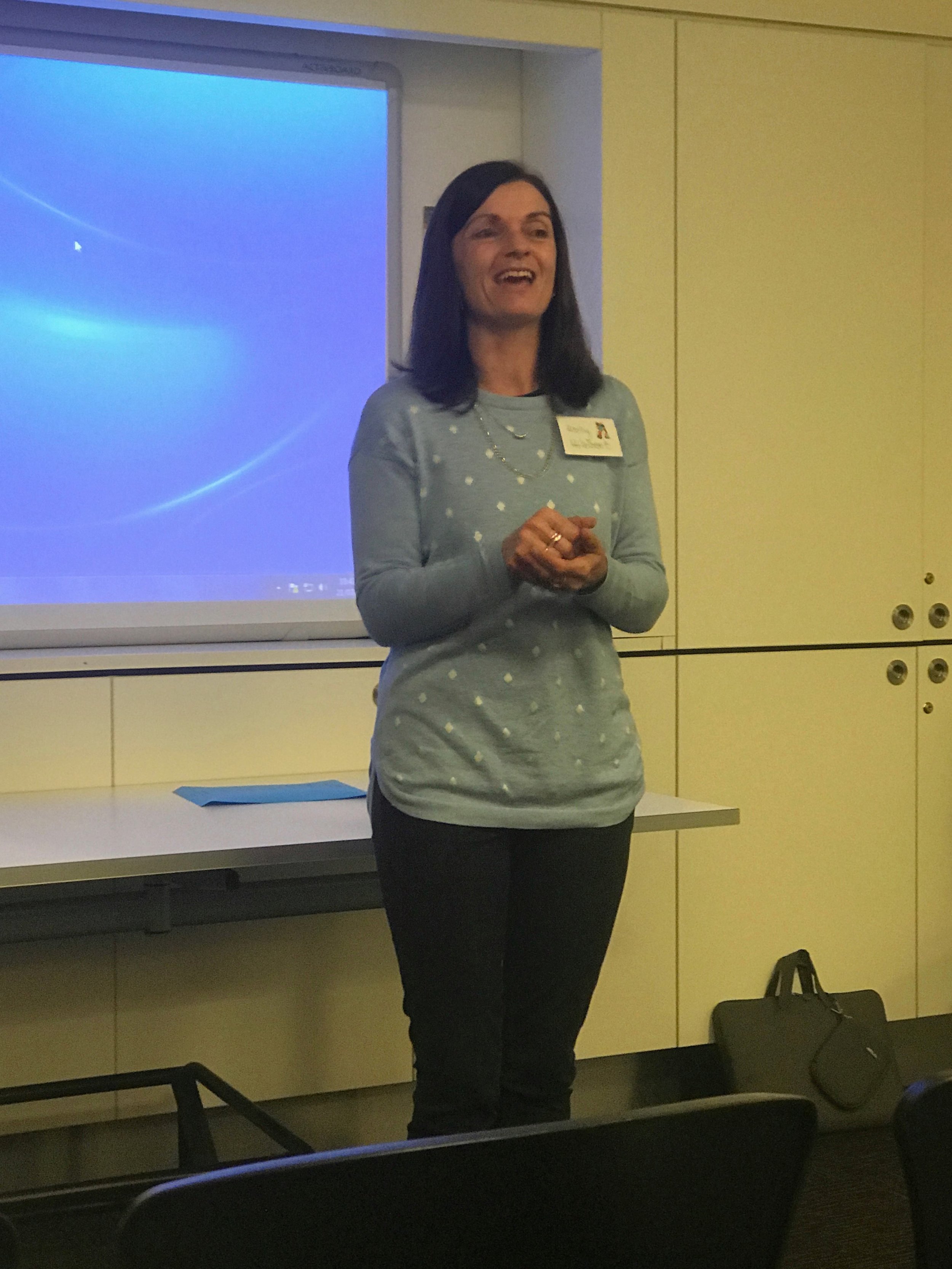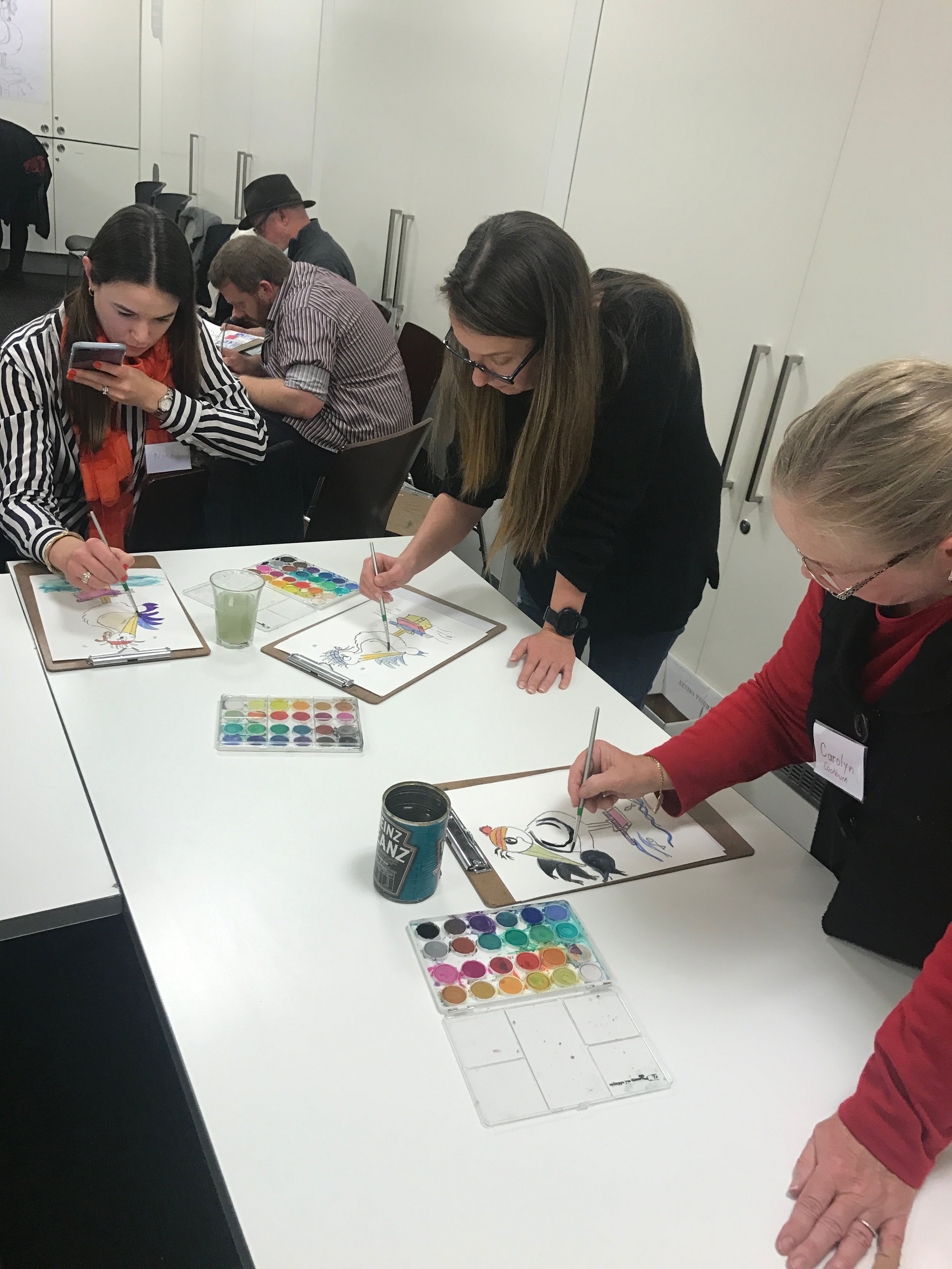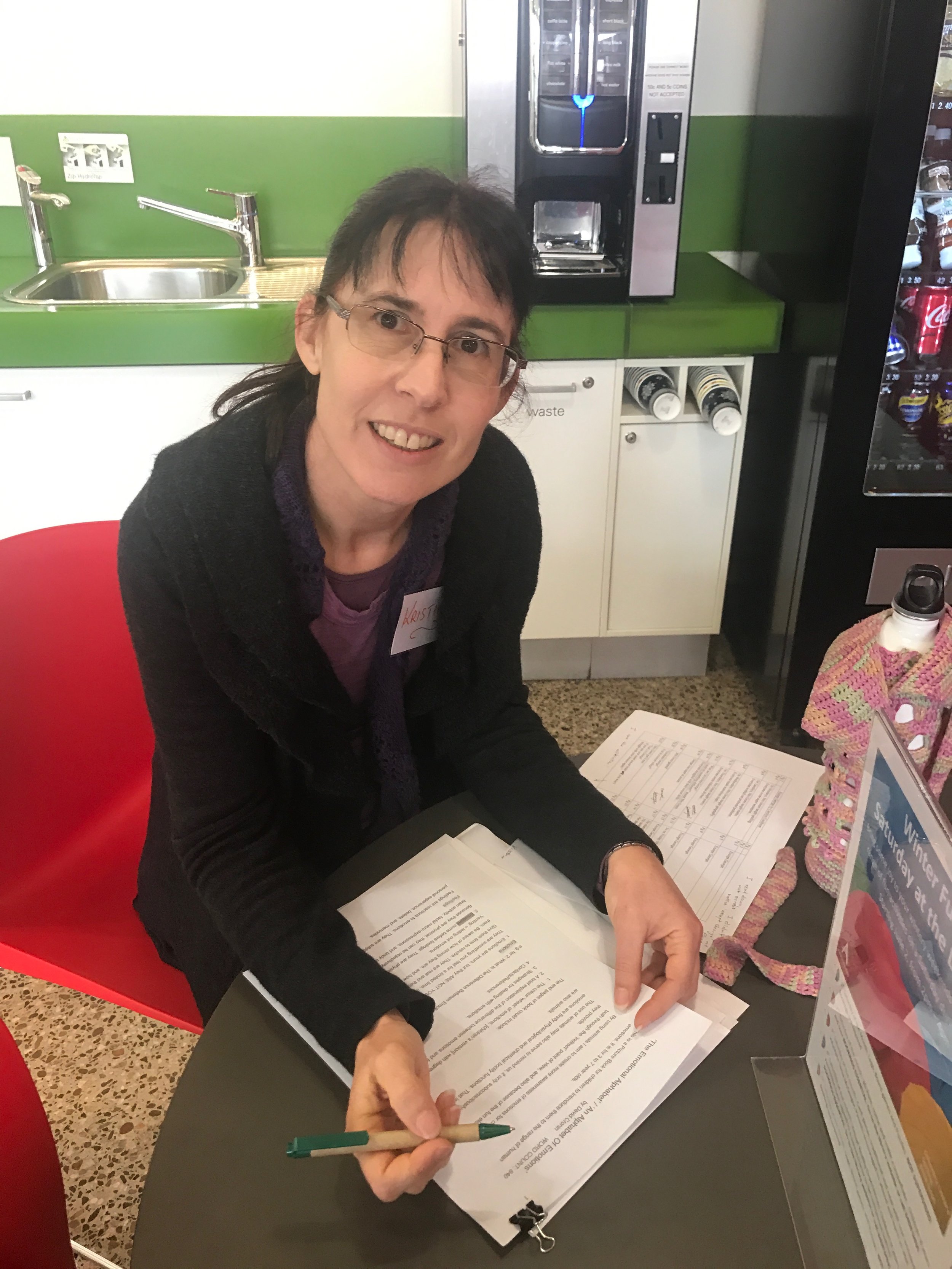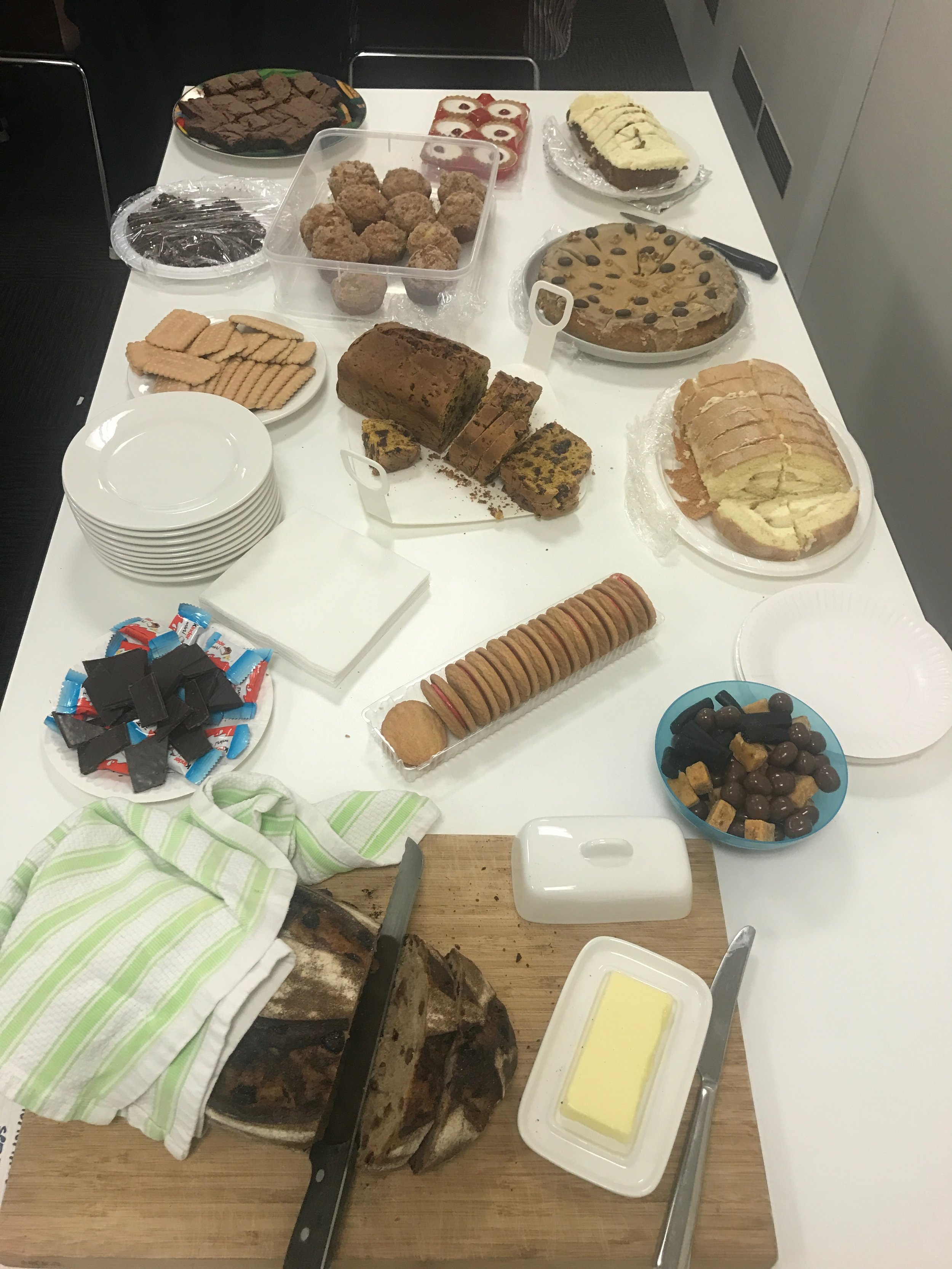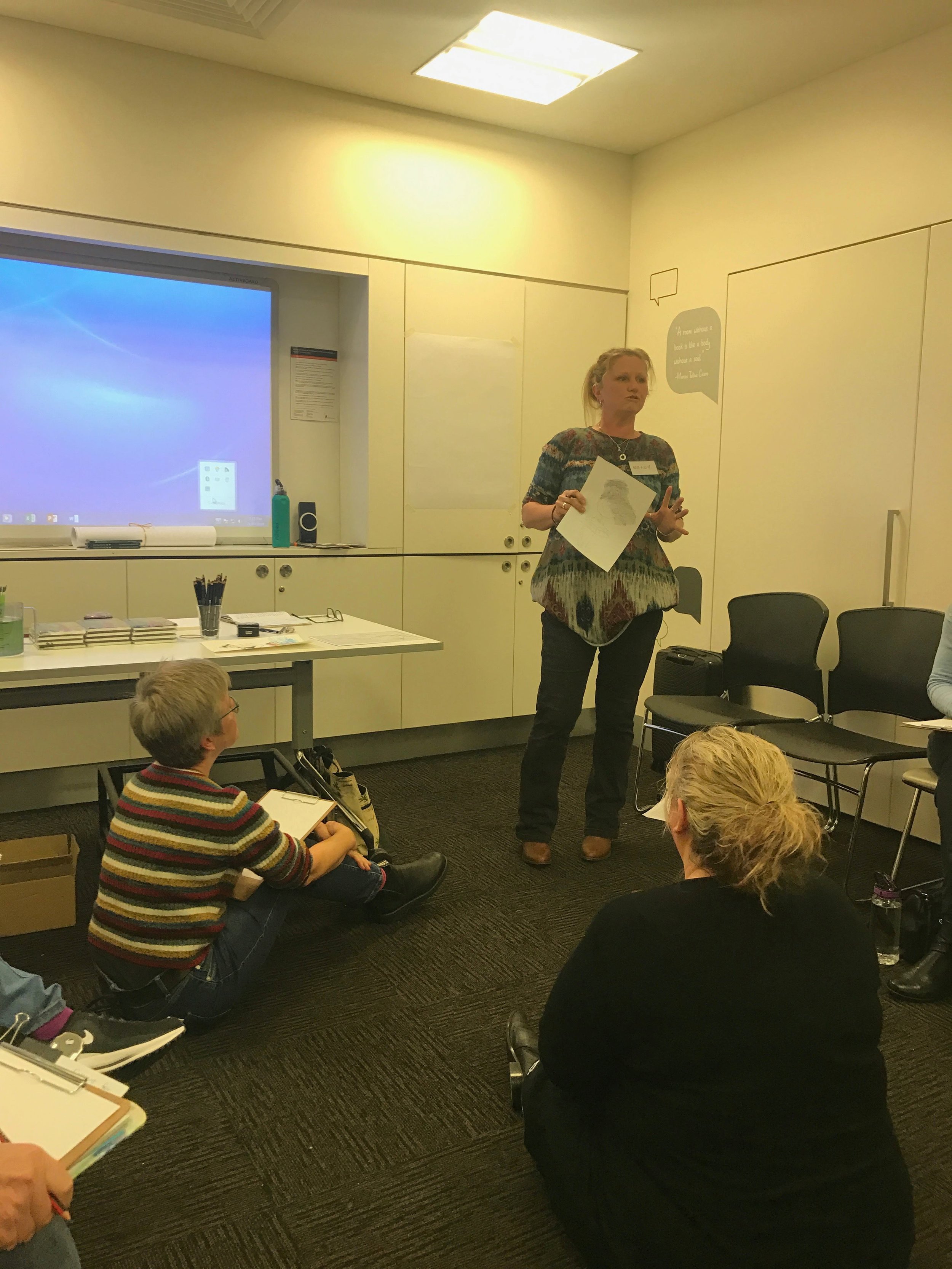Creativity in the cold: Notes on the SA Winter Retreat
SCBWI SA’s Winter Retreat was a perfect escape on a cold, misty Saturday morning in the Adelaide Hills, as thirty members gathered for a day of warmth, conversation and creativity at Stirling’s Coventry Library on 21 July.
Sharing improvement: Critiques
For the eager, a small group critique session was held ahead of the main program. Groups exercised their skills in providing “sandwiched” critiques of other group members’ manuscripts, while benefiting from constructive comments on their own. An impressive amount of feedback was able to be shared in a relatively short time period, as members also made meaningful new connections.
Catching up: KidLitVic Report
A few lucky SCBWI SA members attended the KidLitVic conference in Melbourne in May, and while the rest of us still wish we could have been there, the first session of the day went some way to relieving the disappointment. SCBWI SA Coordinator Kelly Hibbert, along with illustrator Lauren Mullinder and writers Simon Andrews and David Cronin formed a panel to share their experiences of the benefits of attending conferences.
Some of the panel’s key takeaways were:
- Every book is unique and subject to a specific contract.
- The importance of narrative drive, and editing for one point at a time and recording emotions as you review.
- Use your one-page cover letters to provide publishers with a 20-second pitch that can be used in acquisitions meetings – because that might be all the time available!
- Episodic, rather than sequential, series have greater marketing potential, and publishers are often looking to kick off with more than one book to build demand, followed by releases every 9 to 12 months thereafter.
- The importance of using voice to immerse children in your book.
- Useful references on story structure:
- Story by Robert McKee
- The concept of Freytag’s Pyramid
- Books by Linda Seger and Syd Field
- The Australian Society of Authors is a good place to start if you have a contract query
- The Illustrator Showcase was an invaluable networking opportunity and also a source of leads with publishers for several illustrators.
The panel was consistent in nominating the one-on-one publisher sessions as the most valuable part of the conference.
If you missed out on KidLitVic, future opportunities for development and networking are coming up at SCBWI SA’s Professional Day on 14 October 2018 and SCBWI ANZ’s conference in Sydney on 24-26 February 2019.
Fudging it: My Creative Process with Allayne Webster
Internationally published author Allayne Webster gave an entertaining masterclass on her creative process, complete with edible props and illuminating slides. Key points amongst Allayne’s valuable advice included:
- Find a group of trusted writer friends – don’t vent in public.
- Discover what drives you to write. In Allayne’s case, it is often the desire to make a social comment, and there is often a backstory to that drive which also feeds significantly into character development.
- Think about whether to take an organic or an architectural approach to planning. While she has found the latter useful for commissioned works, Allayne prefers the freedom of creativity and being led by character voice and dialogue – although this can take much longer.
- Look up the writing process cycle (Google it!) as a useful way to think about the process.
- Use monotonous household tasks as thinking time.
- Maintain an ongoing connection with a manuscript to avoid wasted time re-immersing in the voice and world.
- Hook the reader with a good beginning: include key details through showing not telling.
- Look to create layers of conflict (internal, impact on others and impact on the world) while telling a story with heart.
Drawing us out: Finding Your Inner Illustrator workshop with Mandy Foot
There were many dubious faces as we commenced this session with clipboards and pencils in hand. After showing us her well-loved copy of Animation by Preston Blair, published illustrator and soon-to-be published author Mandy Foot proceeded to transform a room full of reluctant writers into pleasantly surprised artists. We learned to find the basic shapes in the form, picked up some great tips on working with watercolour, and ended up with remarkably presentable versions of Mandy’s Pelican Jack. Miraculous!
Writing for magazines: practical advice from Kristin Martin and Alys Jackson
Kristin Martin and Alys Jackson are experts at the magazine game, both having been published on many occasions in a variety of children’s magazines around the world. They presented a valuable session focusing on the practicalities on getting published in magazines.
Key takeaways included:
● Magazines have the benefit of providing distribution for your work without any effort (beyond submitting the piece) and often pay quite well.
● Always check the magazine’s submissions guidelines on their website, sign up for their newsletters (both for readers and for creators, although note some can send quite a lot of emails!) and check prior issues of the magazine for style and content.
● You can either write a story specifically for a particular magazine, or find a magazine for a piece you have already written – both approaches can work depending on the context.
.
Check out Alys’s blog for more great advice for writers.
A busy, informative and fun day left us all eager to sign up for the SCBWI SA Professional Day on 14 October 2018 – check the SCBWI ANZ website or Facebook group for information!







